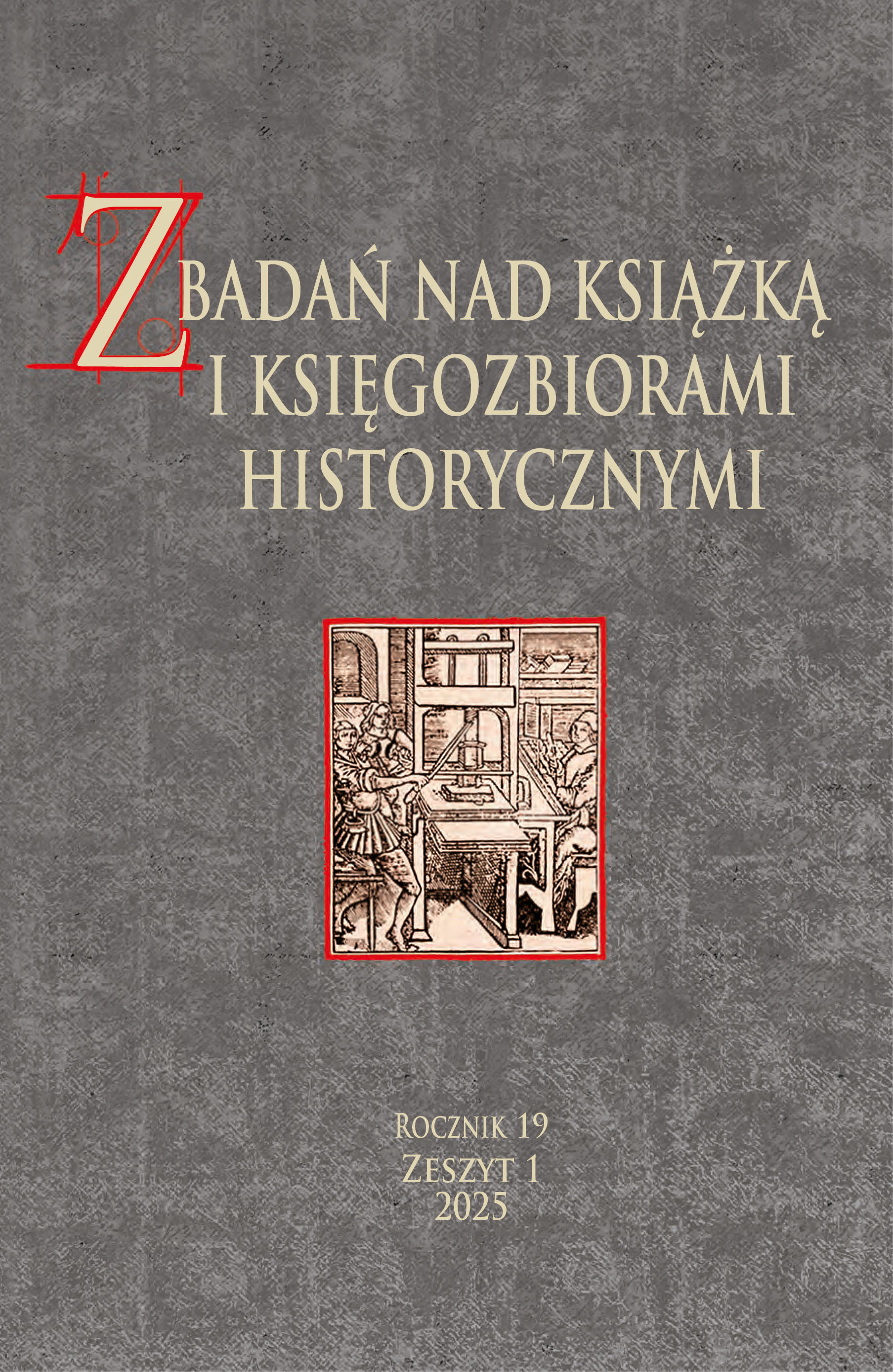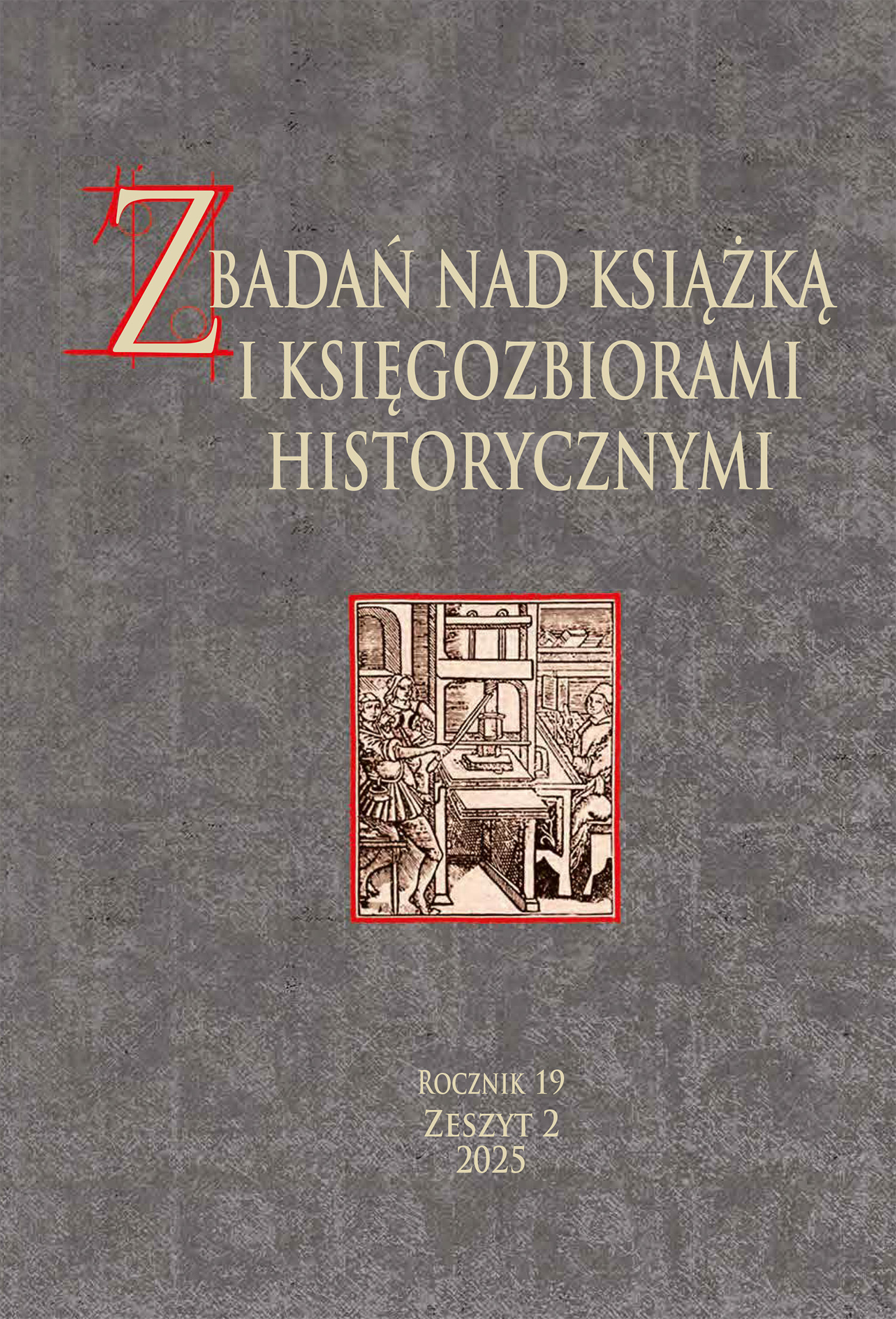Abandoned libraries in the Warsaw ghetto 1942–1944. German librarians’ plans
DOI:
https://doi.org/10.33077/uw.25448730.zbkh.2025.912Słowa kluczowe:
biblioteki żydowskie, getto warszawskie 1940-1943, okupacja hitlerowska w PolsceAbstrakt
At its peak, approximately 450,000 people lived in the Warsaw Ghetto (1940–1943). Many of them had home libraries. There were also bookshops, public lending libraries, and a thriving street trade in antiquarian books. All of these books remained in the ghetto after their owners were deported to extermination camps, and eventually, after the ghetto uprising, the number of these volumes is estimated to be around 500,000.
The German librarian, Wilhelm Witte, commissary manager of three of Warsaw’s most significant libraries, offered to the ghetto authorities to collect and store the abandoned books in the former Main Judaic Library building on Tłomackie Street. However, this turned out to be an unrealistic request, as the SS had seized all remaining Jewish possessions as well as the Library building and denied Witte any access to these books. Thus, the books of the ghetto’s inhabitants were destroyed in the ghetto’s ruins.
Bibliografia
• Biblioteki naukowe w Generalnym Gubernatorstwie w latach 1939–1945. Wybór dokumentów źródłowych. Selected and compiled by A. Mężyński with the collaboration of H. Łaskarzewska, Warszawa 2003.
• Engelking B., Leociak J., Getto warszawskie. Przewodnik po nieistniejącym mieście, Warszawa 2013.
• Knuth R., Libricide: the regime-sponsored destruction of books and libraries in the twentieth century, London 2003.
• Kronika getta łódzkiego, Litzmannstadt Getto 1941–1944. Vol. 5: Suplementy, compiled and edited by J. Baranowski [and others], Łódź 2009.
• Liszka K., Dwie modalności libricide, ‘Studia Judaica’ 2017, No. 2, pp. 187–207.
• Mężyński A., Biblioteki Warszawy w latach 1939–1945, Warszawa 2010.
• Mężyński A., Dwa oblicza niemieckich bibliotekarzy w Polsce podczas okupacji 1939–1945, ‚Z Badań nad Książką i Księgozbiorami Historycznymi’ 2022, Vol. 16, No. 3, pp. 393–406.
• Mężyński A., Kommando Paulsen. Październik-grudzień 1939, Warszawa 1994.
• Olejnik I., Głód słowa drukowanego: o bibliotekach i czytelnictwie w Getcie Łódzkim, „Acta Universitatis Lodziensis. Folia Librorum” 2013, No. 17, pp. 97–108.
• Piotrowski S., Misja Odyla Globocnika. Sprawozdania o wynikach finansowych zagłady Żydów w Polsce, Warszawa 1949.
• Schidorsky D., Confiscation of libraries and assignments to forced labour. Two documents of the Holocaust, ‘Libraries and Culture’ 1998, Vol. 33, No. 4, pp. 347–348.
• Shavit D., Jewish Libraries in the Polish Ghettos during the Nazi era, ‘Library Quarterly’1982, vol. 52, no. 2, pp. 103–121.
• Temkin B., Biblioteki żydowskie w Warszawie w świetle cyfr, „Dos Wirtszaftłeche Łebn” 1934, No. 6–7, pp. 20–27.
• The Holocaust and the book. Destruction and preservation, ed. J. Rose, Amherst 2001.
Pobrania
Opublikowane
Numer
Dział
Licencja
Prawa autorskie (c) 2025 - fully remain with the author.

Utwór dostępny jest na licencji Creative Commons Uznanie autorstwa – Użycie niekomercyjne 4.0 Międzynarodowe.







